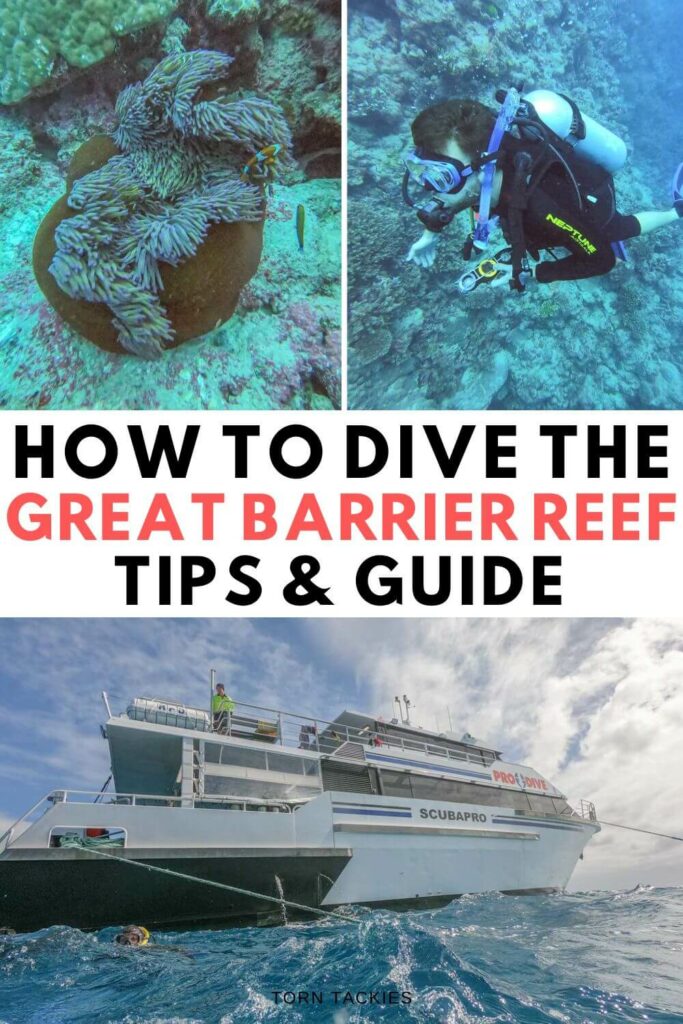The Great Barrier Reef needs no introduction. It’s the most extensive coral reef system on Earth and one of the seven natural wonders of the world.
I spent 3 days diving the Great Barrier Reef, and it was an epic adventure.
After 11 dives, which included night dives and unguided dives, I’m sharing all my tips for scuba diving the Great Barrier Reef. I’ve included when and where to go, how many days you need, costs, and more.
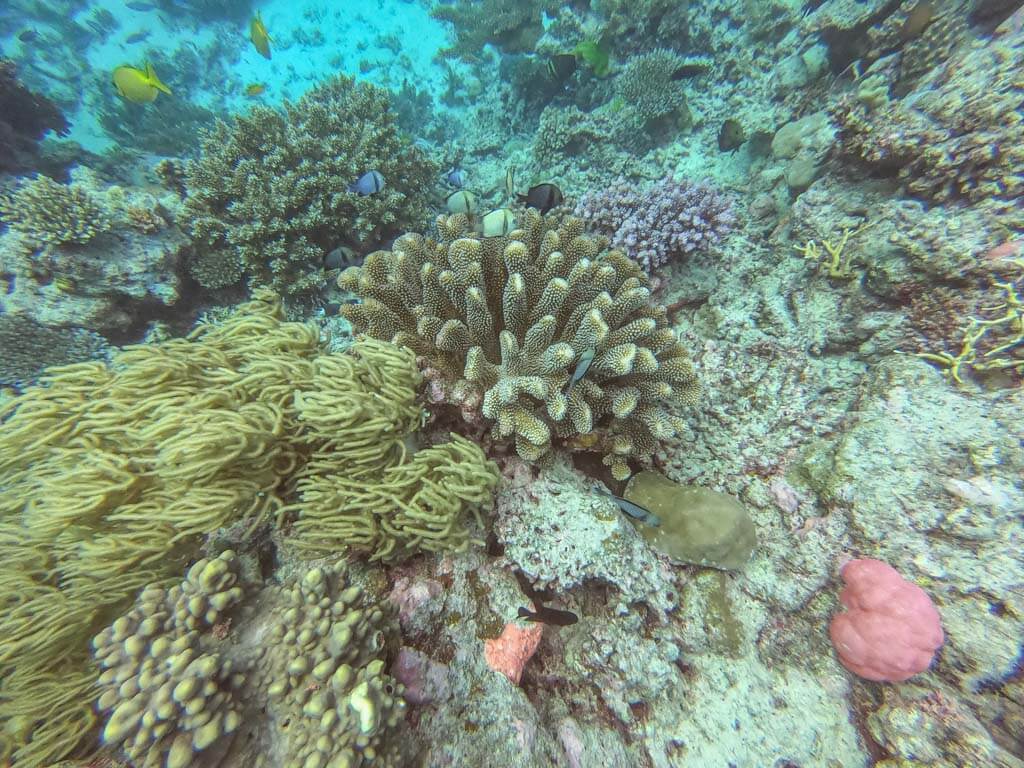
1. There are so many places to go diving in the Great Barrier Reef
The Great Barrier Reef is massive!
It stretches more than 2,300 km along Australia’s northeast coast of Queensland, starting in Bundaberg on the south and ending at the tip of Cape York on the north.
While Cairns is arguably the most popular base, there are a few major access points where you can visit the reef.
2. where to dive the Great Barrier Reef
Here are the best places to go diving in the Great Barrier Reef.
Cairns is a great starting point for diving the Great Barrier Reef. I followed this Cairns itinerary, which includes all the best things to do (including scuba diving the Great Barrier Reef).
Cape Tribulation: Located in the Daintree Rainforest (the oldest rainforest in the world), Cape Tribulation is a few hours north of Cairns. It’s the only place on earth where two natural wonders meet up
Townsville is the gateway to the central section of the Great Barrier Reef. You can dive from Magnetic Island and explore the SS Yongala (regarded as the world’s best wreck dive).
Airlie Beach is home to the Whitsundays, a cluster of spectacular islands famous for their white sand and turquoise blue waters.
Bundaberg lies on the Southern Great Barrier Reef. From here, you can visit Lady Elliot Island, Lady Musgrave Island, and Heron Island.
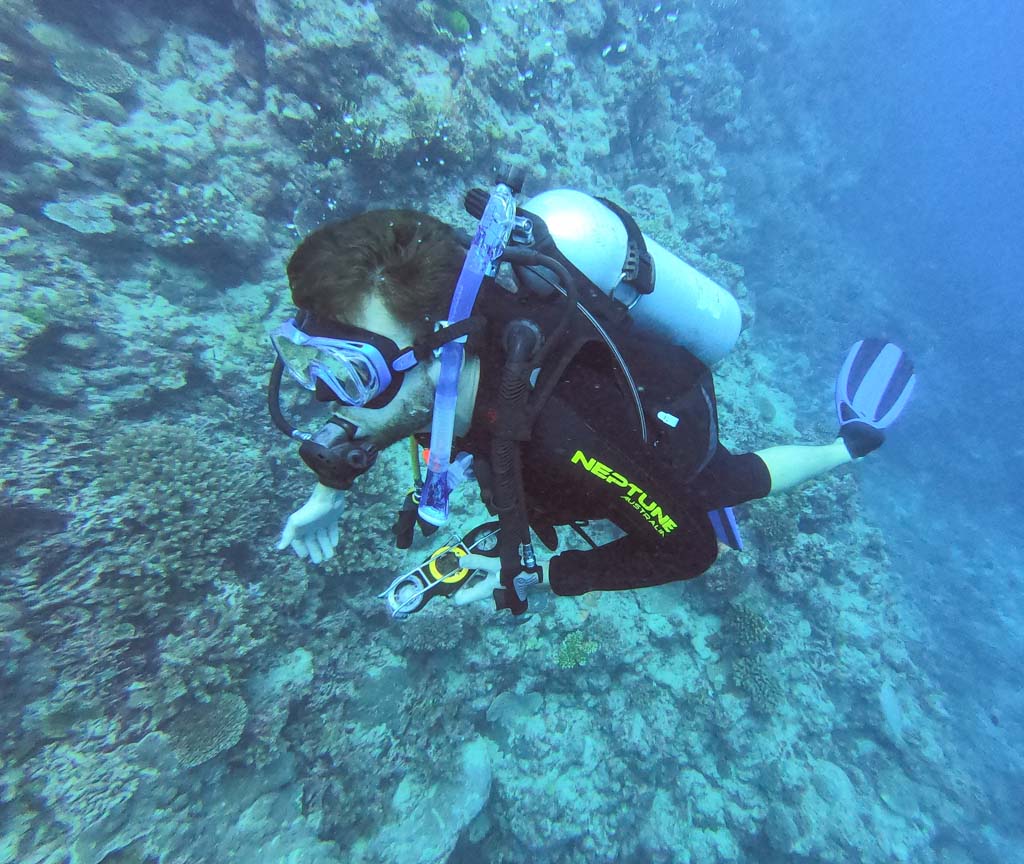
3. Diving the Great Barrier Reef during dry season (winter)
Every Great Barrier Reef travel blog you read will tell you that the best time to go diving is from May to October.
This is the dry season with little to no rain and no stingers. You’ll also have the best underwater visibility.
It’s winter in Australia, but not too cold. The temperatures hover around 26 degrees during the day, but the evenings can get chilly, reaching 17 degrees at its lowest.
4. Diving the Great Barrier Reef during wet season (summer)
November to April is the wet season in northern Queensland. Tropical showers are common, and this can impact the water’s visibility.
But it’s also summer in Australia! Expect hot and humid conditions – but luckily, you’ll have the rain to cool you down.
There are a few benefits of diving in the Great Barrier Reef during the wet season.
- The water temperatures peak at 29 degrees, which is ideal. That’s a whole 7 degrees warmer than during winter!
- It’s also quieter with fewer tourists.
- Coral Spawning takes place in November and December.
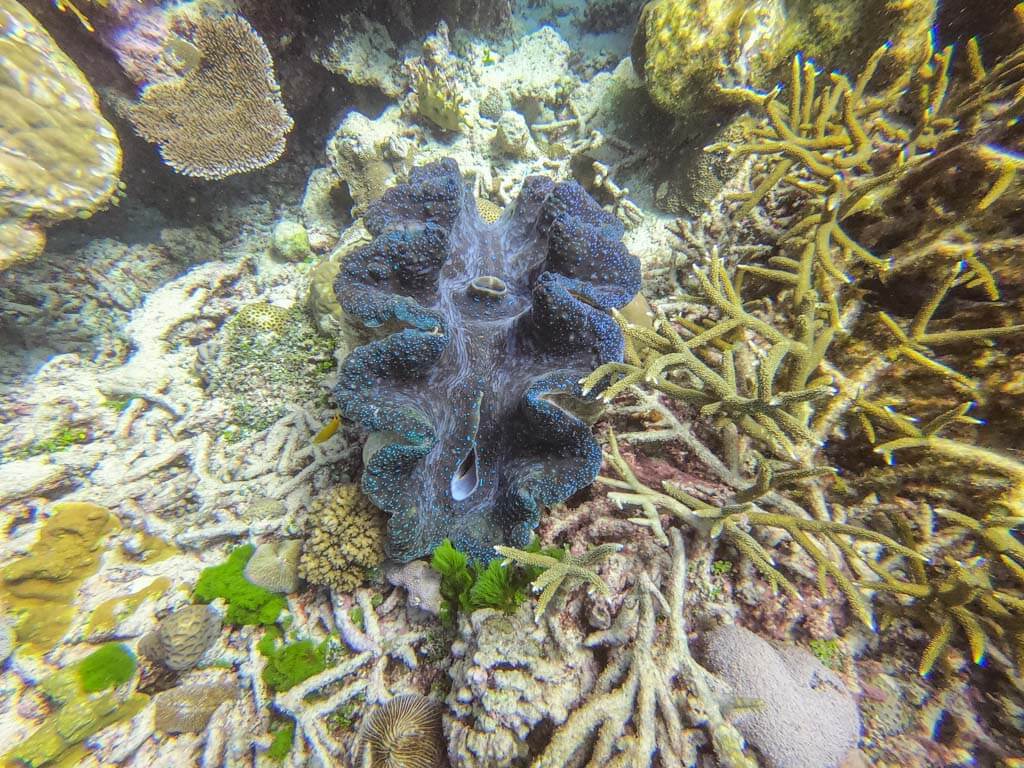
5. The best months are September and October
After speaking to a few dive instructors, the best months to go diving at the Great Barrier Reef are September and October.
This is the end of the winter season, so the water and outdoor temperatures are slightly warmer than in June and July.
It’s also outside the trade wind times and stinger season, so you can expect optimal conditional all around.
6. How to dive the Great Barrier Reef
You can explore the Great Barrier Reef on a day trip like this. But it will be a very busy day. This is because the boat ride to the reef takes 1.5 to 3 hours. Then, it takes another 1.5 to 3 hours to return to the mainland.
If you plan on diving the Great Barrier Reef from Cairns, I highly recommend joining a scuba diving liveaboard tour. This means you spend a night on the reef!
By doing a liveaboard, you also get the chance to do a night dive. This is a phenomenal experience, and you’ll see all those creatures that come out after dark.
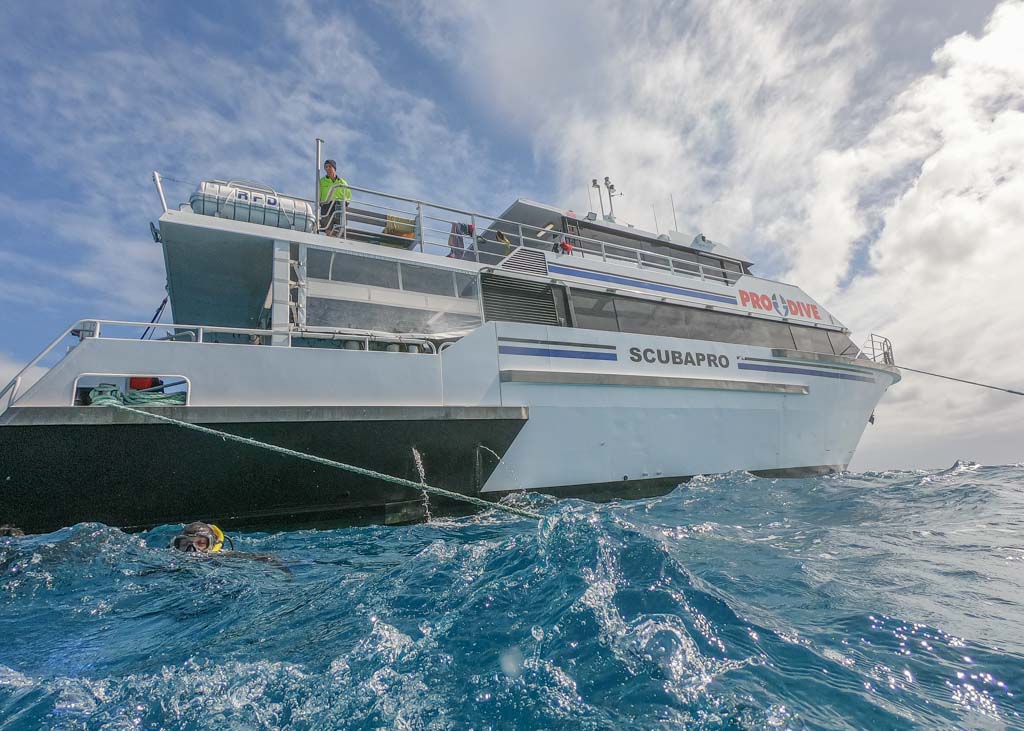
7. The best Great Barrier Reef liveaboard tour
Unfortunately, there aren’t many liveaboard options to choose from. And they get booked out quickly as liveaboard diving is in high demand.
I had initially booked an overnight liveaboard from Cairns with Coral Sea Dreaming. It’s a much smaller boat and can accommodate up to 8 guests. I like that it was a small group tour that came with fantastic online reviews.
But I eventually decided to go with Pro Dive as they offer a longer liveaboard option of 3 days (not 2). But on the downside, Pro Dive has a much bigger boat, and you’re diving with 30+ people on every dive!
I paid just over 1000 AUD for 3 days on the Great Barrier Reef, which was all-inclusive.
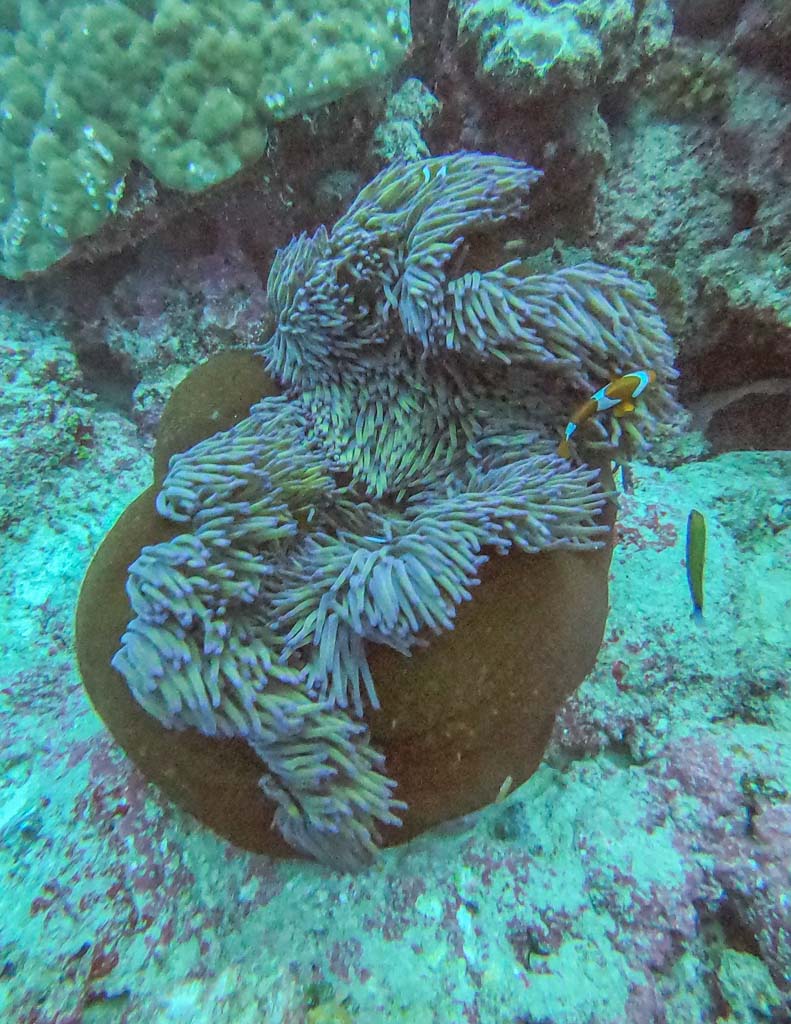
8. What it’s like to dive at the Great Barrier Reef
It’s safe to say that everyone planning on diving the Great Barrier Reef has high expectations. It’s pretty hyped up!
I was expecting to see more vibrant coral and bigger schools of fish (or even Grey Nurse and Leopard Sharks like you find when diving in Byron Bay). Despite this, I still had incredible encounters.
My first night dive was mind-blowing as there were reef sharks everywhere! They’re harmless, but they did come close to us, which was a surreal experience.
We also swam past a massive school of parrot fish, saw the biggest clams ever, and navigated through amazing swim-throughs.
But you must remember that the reef is so big, and every dive site offers a different experience. If you’re an advanced diver, you might prefer the sites closer to the reef’s northern tip or the S.S. Yongala wreck dive.
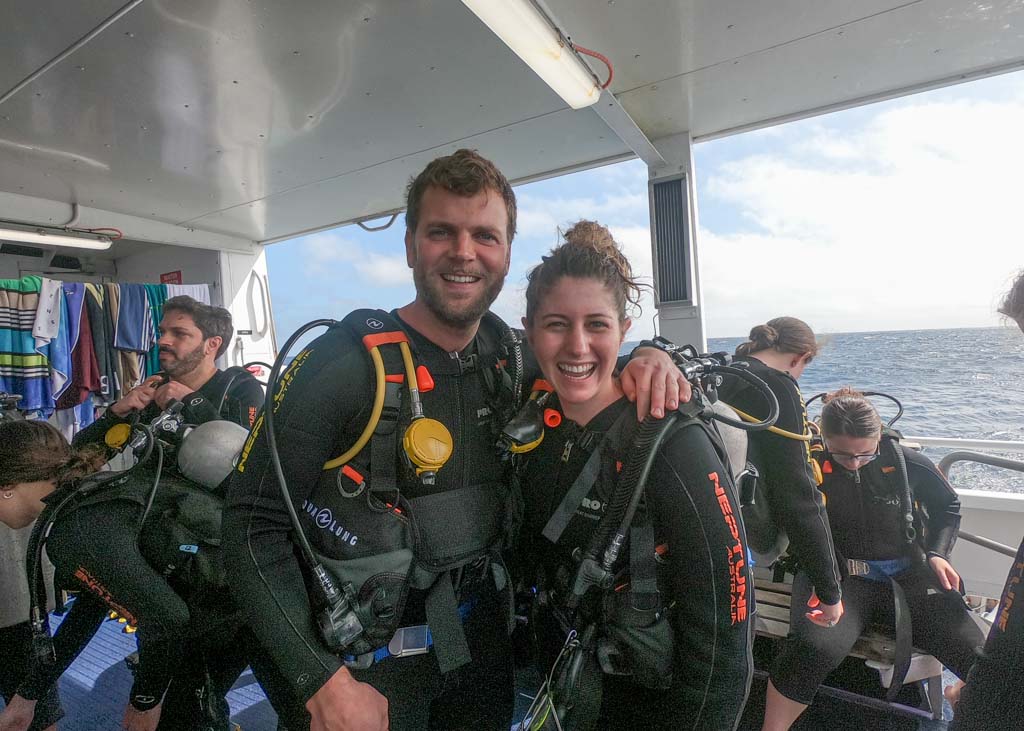
9. Be prepared for unguided dives
Most Great Barrier Reef scuba diving is unguided. This means it’s only you, your dive buddy, and your trusted compass, deep below the surface.
Before diving in Australia, I had only ever done guided dives. With no clue how to navigate underwater, I’d be lying if I said I wasn’t nervous!
The reality is that most people will be in the same shoes as you. But the Great Barrier Reef is a shallow reef with no current.
Generally, your first dive is guided. This allows you to get familiar with the gear and the water conditions.
Before your unguided dive, your instructor will give a thorough briefing about the site and show you how to use a compass. If you’re feeling unsure, you can always request a guide for every dive, but you may need to pay extra for this.
Our first unguided dive was a night dive! I was out of my comfort zone, but it was one of the most incredible experiences.
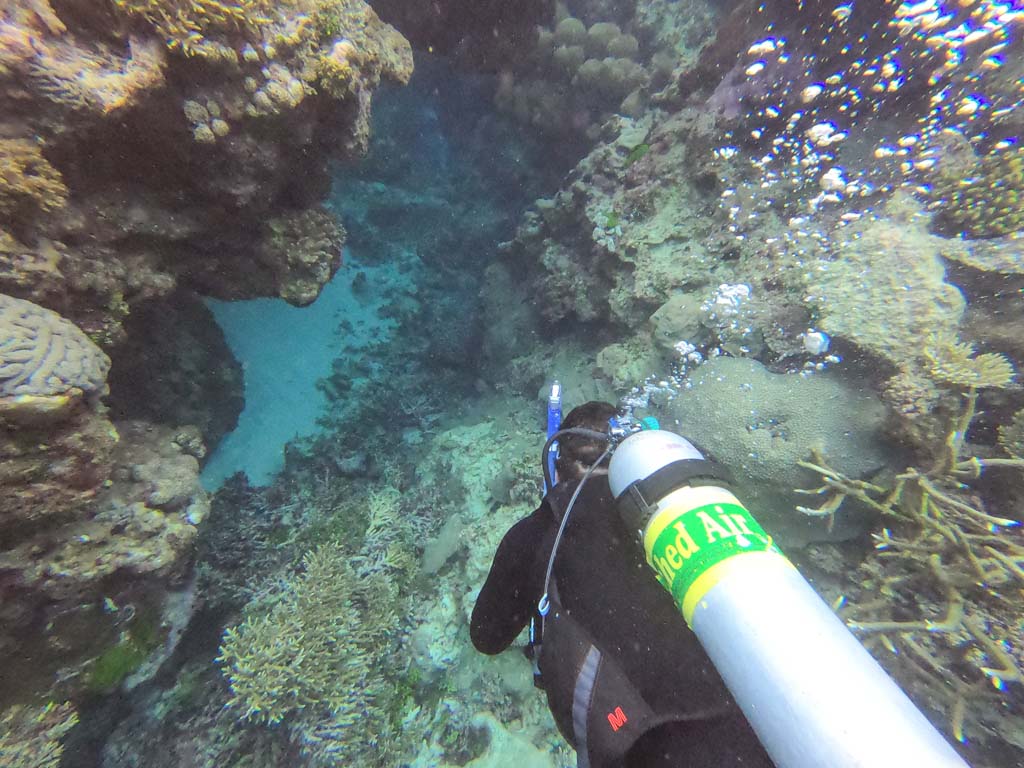
10. The Great Barrier Reef dive sites are uncrowded
This is a massive pro of diving the Great Barrier Reef – no crowds.
During my 3-day scuba diving liveaboard, I only saw one other boat, and they were diving at a different site to us.
Diving unguided, with only your buddy and no one else around you, is quite something and will make your experience more memorable!
11. Be careful of the stingers
You might be planning your Great Barrier Reef diving trip based on water visibility and weather conditions, but you must also be aware of stingers.
The most popular type of stingers in this area are box jellyfish. Their venom can be fatal to humans, and you’ll find them in the waters from November to April each year.
You can still go scuba diving at the Great Barrier Reef during stinger season but will have to wear a stinger suit. The diving operators provide these.
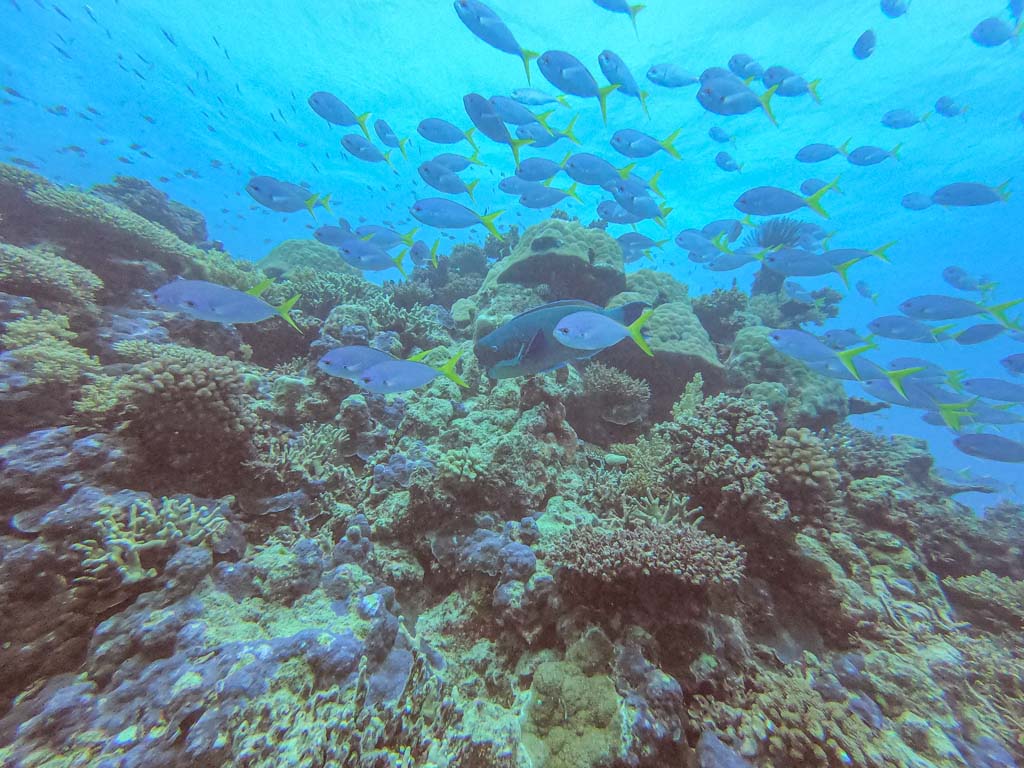
12. Whales on the Great Barrier Reef
Here are a few key attractions:
- June to July: Dwarf Minke Whales
- July to September: Humpback Whales
I was keen to dive with dwarf minke whales, so I booked my 3-day diving liveaboard for July. I didn’t realize these whales don’t actually hang out on the reefs that are closer to the mainland, which I was visiting.
To dive with them, you need to join a specific Minke Whale Liveaboard that goes further north to Ribbon Reef.
We also didn’t see any humpback whales, even though we were there during the annual migration. This is not to say you won’t experience these whale encounters, but the chances aren’t likely unless you book a specific whale liveaboard dive trip.
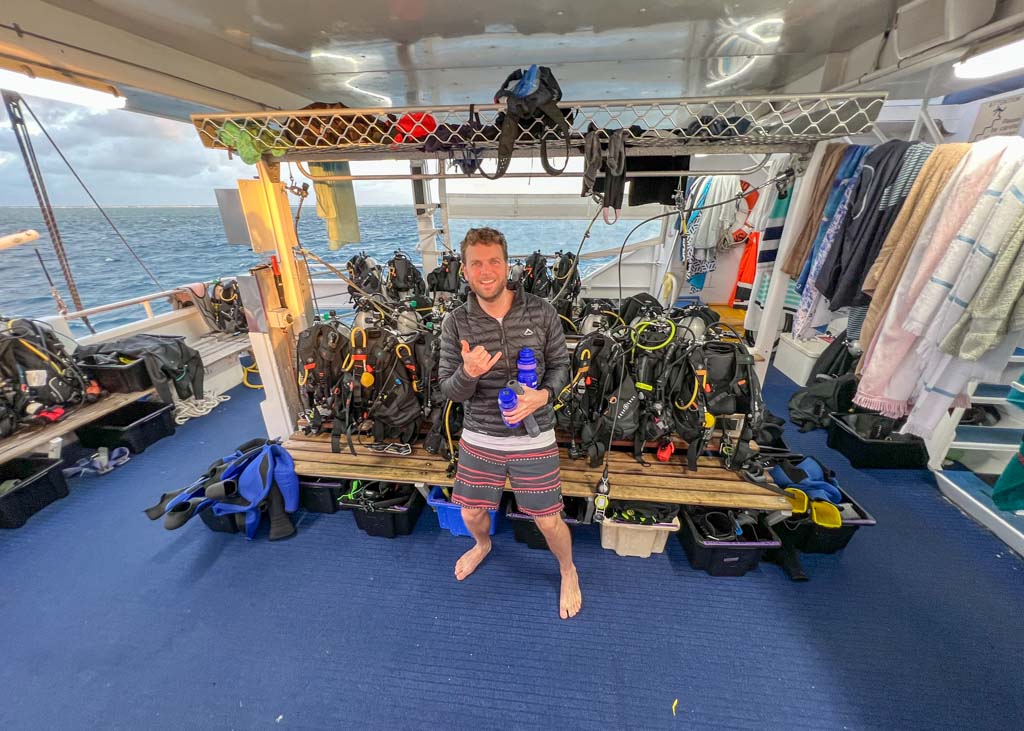
13. The trade wind pick-up in June and July
June and July are the windiest months on the reef. While this won’t affect your underwater experience of diving the Great Barrier Reef, it can cause rough, windy conditions above the water.
During our diving trip in July, it was super windy. The 3-hour boat ride from Cairns to the reef (and back) was pretty hectic and extremely bumpy! Most people on our trip took sickness tablets.
The rough conditions died down when we got to the reef, but it was still windy throughout the three days.
But don’t avoid July just because of the winds. A friend joined the same liveaboard a week after I did. Her experience was perfect – little to no wind. So, it really is the luck of the draw!
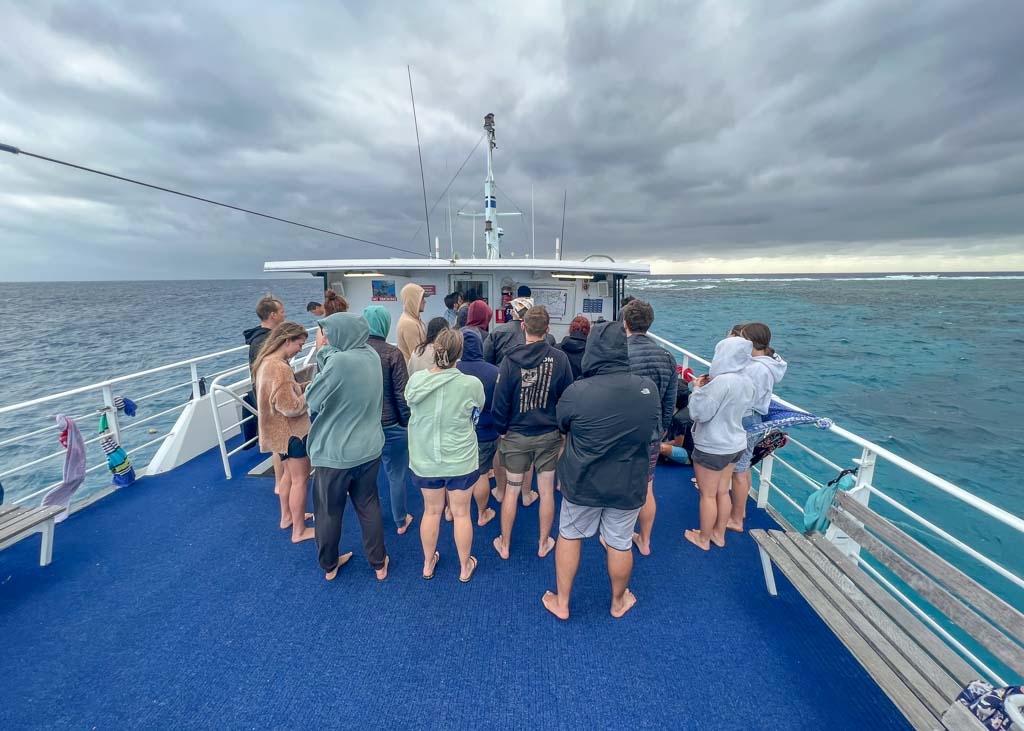
14. You will Dive, sleep, eat, repeat on a Great Barrier Reef liveaboard tour
If you’re doing a Great Barrier Reef liveaboard, be prepared to dive, sleep, eat, and repeat.
It’s full on!
And while you may be tempted to skip a dive in favor of chilling on the sundeck, try to get to all the dives on your itinerary. You never know what sightings you’ll miss out on.
15. Do a dive certification
The Great Barrier Reef is a great place to get your diving certification. You’ll do two days of theory and skills training in Cairns before completing your open-water dives on the Great Barrier Reef.
The conditions are perfect for beginner divers as there are no strong currents, the visibility is excellent, and it’s a shallow reef.
I did my Padi Advanced Course plus Nitrox certification during my liveaboard trip.
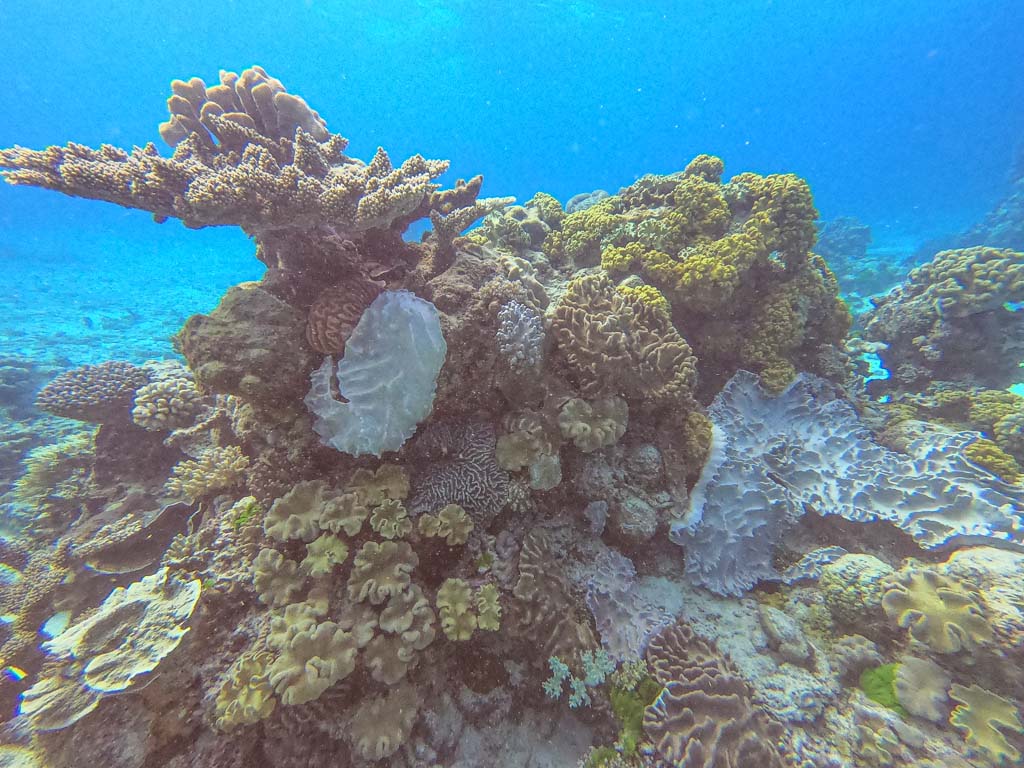
16. Don’t spend much time in Cairns before your Great Barrier Reef diving trip
Cairns is the most popular starting point for most Great Barrier Reef dives. There are plenty of dive shops here, and the prices are competitive.
But you really don’t need to spend much time in the city itself.
Book your flights to Cairns so that you arrive the afternoon before your liveaboard departure. This will give you enough time to wander through town and explore the harbor. There’s not much more to see besides that!
17. You can’t fly for 24 hours after your last dive
Remember that if you’re diving the Great Barrier Reef, you can’t fly within 24 hours of your last dive. It’s best to pair your dive trip with one of the below local attractions.
- Cairns and Port Douglas: Spend two more days exploring the lush walking tracks and epic swimming holes in Daintree National Park.
- Townsville: After diving the SS Yongala wreck, visit nearby Magnetic Island. It’s a tropical island paradise with palm-fringed beaches and abundant wildlife.
- Southern Great Barrier Reef: After diving Lady Elliot Island, Lady Musgrave Island, or Heron Island, head to Fraser Island. It’s the largest sand island in the world with epic 4WD tracks.
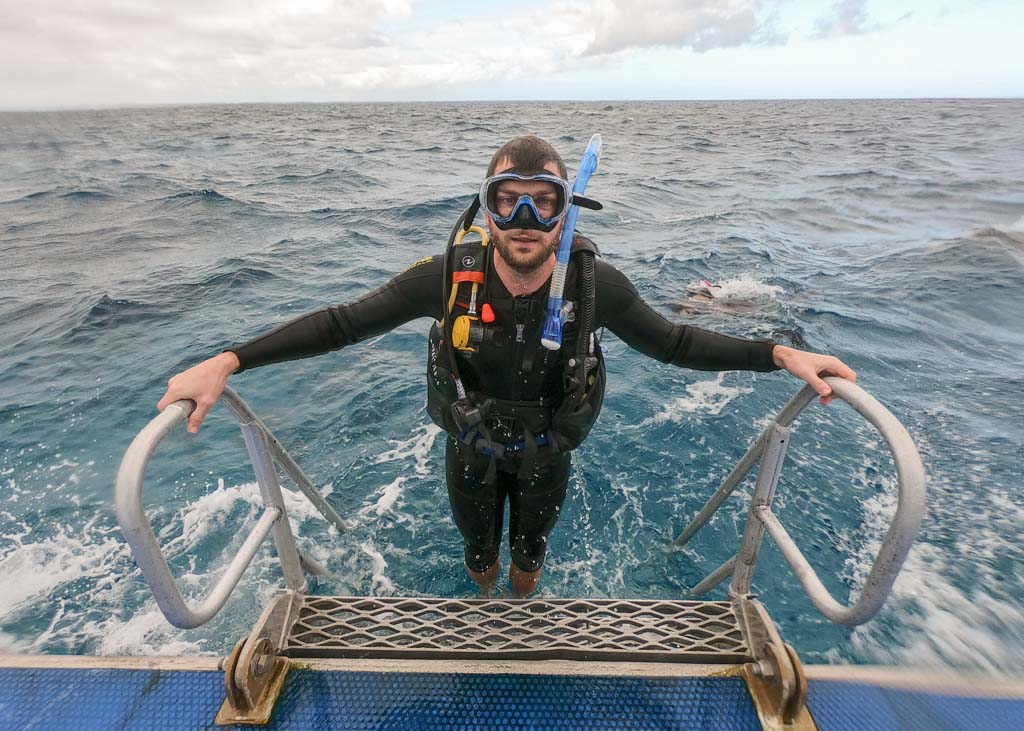
Great Barrier Reef FAQS
Here are a few things that I often get asked about the Great Barrier Reef. If you have any other questions, drop me a message in the comments section below.
Is it worth diving the Great Barrier Reef?
Yes! The Great Barrier Reef is a world heritage site and a bucket list destination. There are so many incredible places to go diving along the reef, including Cod Hole, Ribbon Reef, and Osprey Reef.
And better yet, Northern Queensland has so much more to offer. Visit the Daintree Rainforest, go 4WD’ing on Fraser Island, live the island life of Magnetic Island, or go sailing through the Whitsundays.
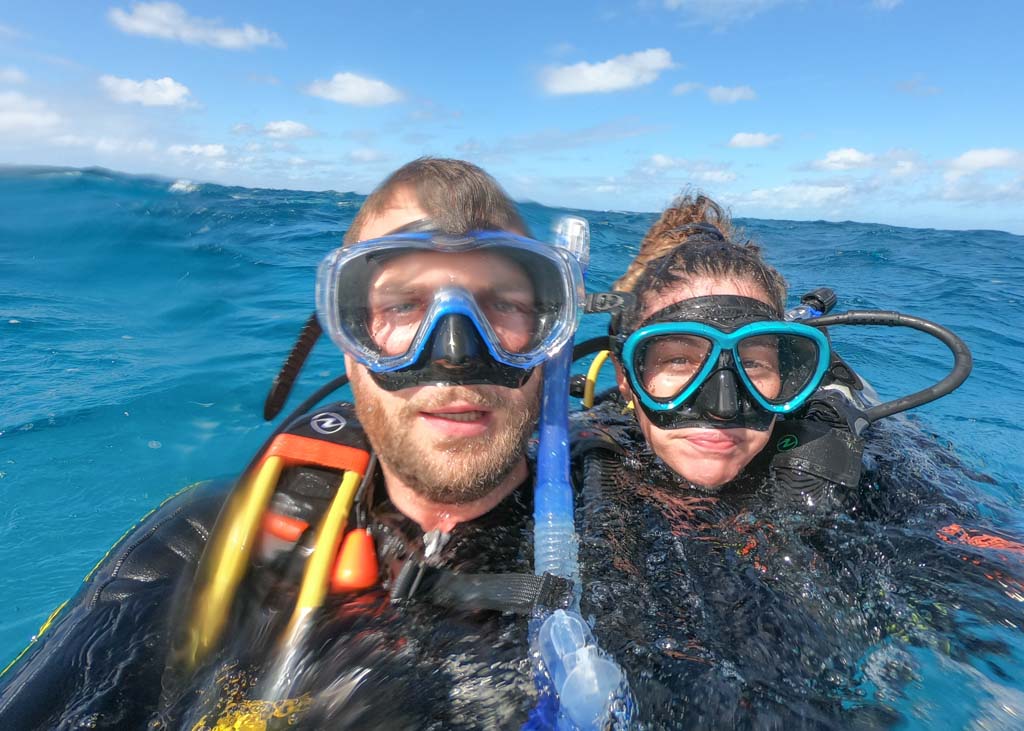
What is the best time of year to dive the Great Barrier Reef?
The dry season from May to October offers the best conditions for diving the Great Barrier Reef.
Looking for the overall best months to plan your trip? September and October!
This is because you won’t have the trade winds during this time, the temperature starts heating up, and the days are sunny. And it’s just before the stinger season, so you won’t need to worry about that either.
Where is the best diving on the Great Barrier Reef?
It depends on what you’re after. If you’re visiting the Great Barrier Reef for the first time, I’d recommend doing a scuba diving liveaboard from Cairns. After three days out at sea, spend another three days exploring the nearby Daintree Rainforest and Cape Tribulation.
But if you’re looking for the best diving on the Great Barrier Reef, the S.S. Yongala is an incredible wreck dive. You should have your advanced certification for this as you’ll be diving as deep as 30m, where the base of Yongala rests.
Are there Great White Sharks in the Great Barrier Reef?
It’s highly unlikely that you will find Great White Sharks in the Great Barrier Reef. This is because the water temperatures in north Queensland are too warm for them. They prefer temperatures between 12-24 degrees.
But there was a sighting of a Great White Shark on the southernmost part of the reef, near Lady Elliot Island. This was in 2020, but it’s only the second time one has been seen near the reef in 25 years.
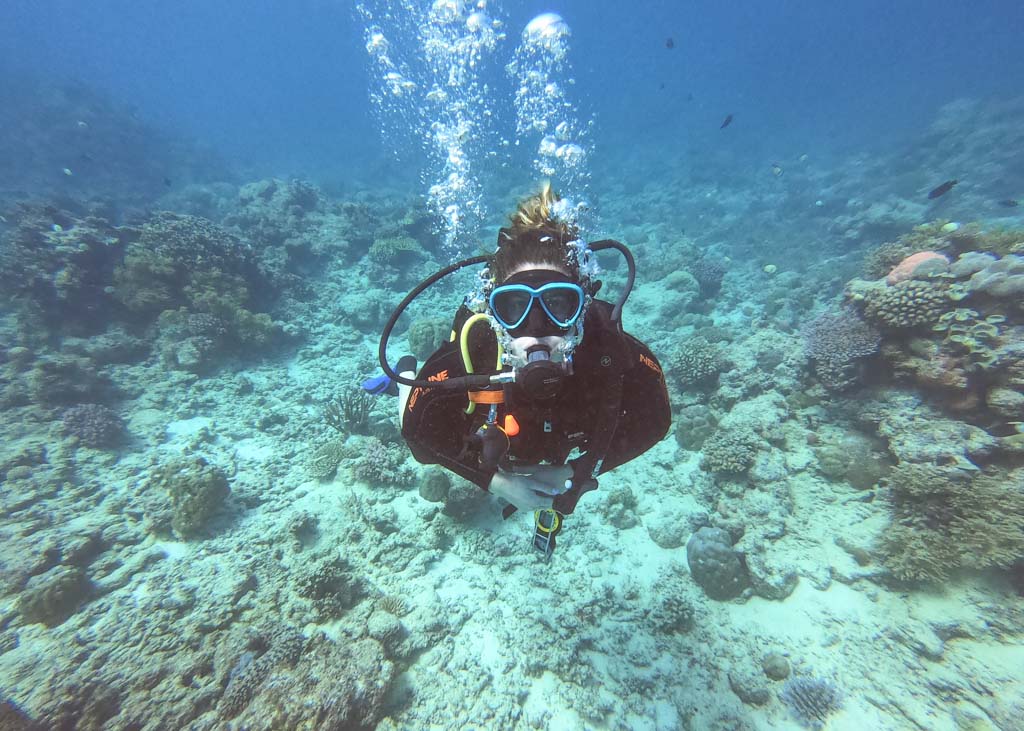
How many days do you need in the Great Barrier Reef?
If you’re diving the Great Barrier Reef from Cairns, it’s best to do a 3-day liveaboard. This gives you more time in the water as there is so much to explore.
Like it? Pin it!
Torn Tackies contains affiliate links. If you make a purchase using one of these links, I may receive compensation at no extra cost to you. See my disclosure for more information.
Are you planning your Great Barrier Reef scuba diving trip? Do you have any questions? Drop me a message in the comments section below.
Looking for more Australian travel inspiration? Check out my other posts!

